One of the most well-liked travel destinations in Southeast Asia and one of the easiest countries to navigate is Vietnam.
What is the finest means of transportation in Vietnam? How you move around Vietnam greatly depends on how long you plan to stay there. Travelers to Vietnam can pick from a variety of modes of transportation, including cars, motorbikes or cyclos, taxis, trains, buses, airplanes, and boats.
No matter how long you stay or how much money you spend on your schedule, here is a rundown of the best ways to move around Vietnam.
The Different Forms of Transportation in Vietnam
By Motorbike
What mode of transportation is most used in Vietnam? Either a scooter or a motorcycle.
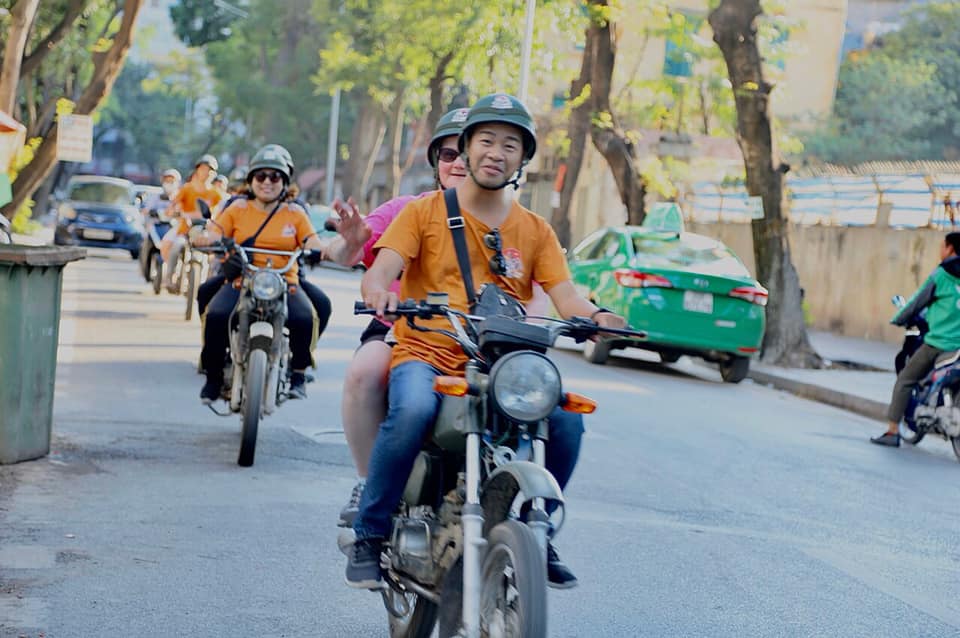
Motorbikes are the best mode of transportation for solo travelers to Vietnam since they provide the most authentic and engaging travel experience.
Anywhere in Vietnam, including hotels, cafes, and tourism companies, offered motorbike rentals. Even though it is the most common means of transportation for Vietnamese, this mode of transportation is only appropriate for the brave.
In Vietnam, it is mandatory to wear a helmet, so be sure to inspect the motorbike or motorcycle properly before setting off. There are gas stations all over the nation, and petrol is reasonably priced for the amount of distance you can go on a tank.
Find “xe om” (motorbike taxis), “Grab bikers,” or any other comparable forms of “Technological xe om” if you’re not ready to scream off the road on your own (in Vietnamese slang). Taxis on motorcycles exist, as they seem. You must climb on a motorbike or scooter and ride along with the local driver as a passenger. But before you go on, agree on a fee and don’t be scared to bargain.
If you only need to travel between two locations, check for a “xe om,” which is available in other, more tranquil cities like Hue.
By cyclos
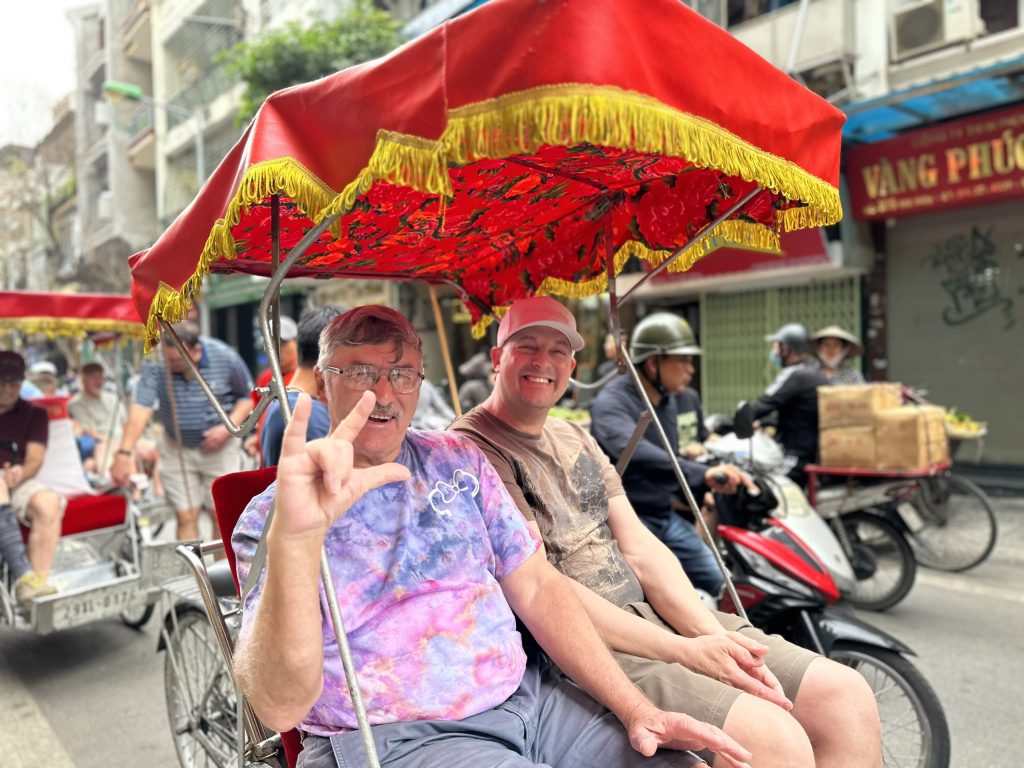
Despite being prohibited in some of the more crowded cities, cyclos (bicycle rickshaws) are a straightforward means of transportation that is available in many towns throughout Vietnam. Before boarding a cyclo, you should tenaciously haggle over the price for your particular location.
By Plane
Obviously, the fastest and most expensive option for anyone to travel around Vietnam is by plane.
Flying to and around Vietnam is a terrific option for tourists who need to reach where they’re going quickly because you can get practically anyplace in the nation in around two hours using this mode of transportation.
The largest (and priciest) domestic airline in Vietnam is Vietnam Airlines, but there are other low-cost carriers as well, including VietJet Air, Jetstar, Bamboo Airways, and VASCO.
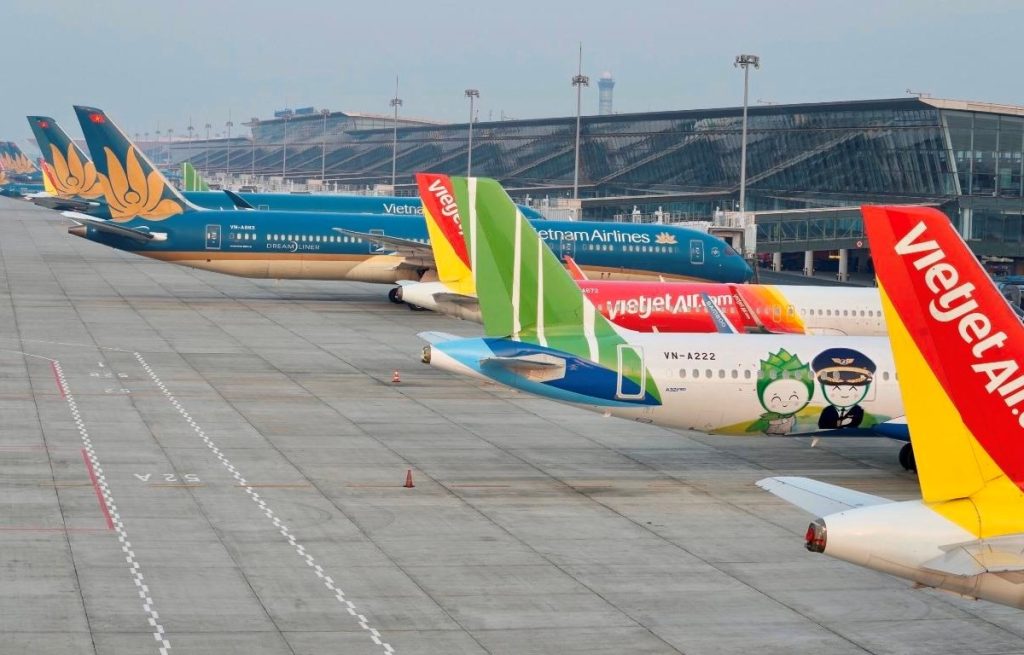
There are more than 20 airports in Vietnam, with 8 of them being international, located in Hanoi, Ho Chi Minh City (Saigon), Da Nang, Nha Trang, Hai Phong, Phu Quoc Island, Can Tho, and Da Lat. Hanoi and Ho Chi Minh City get the vast bulk of international flights, with regular arrivals via Asian hub cities. The most frequent flight destinations are Hong Kong, Seoul, Bangkok, Singapore, Guangzhou, Siem Reap, and Phnom Penh.
Since the low-cost airlines frequently offer roughly 30–50% off tickets when they have sales, making your reservation early may result in cost savings. The time you book and the dates you intend to fly affect the cost of the ticket. Regarding airfare, there is no distinction between Vietnamese nationals and foreigners.
By Train
One of the few Southeast Asian nations having a functional rail system is Vietnam. Although traveling by train in Vietnam is more expensive than by bus, the added comfort makes it worthwhile to give it a try. The Viet tourism office emphasizes that trains are safer than buses above anything else.
The “Reunification Express” train, which travels over 30 hours from the capital Hanoi to Ho Chi Minh City, is the most well-liked method of transportation.
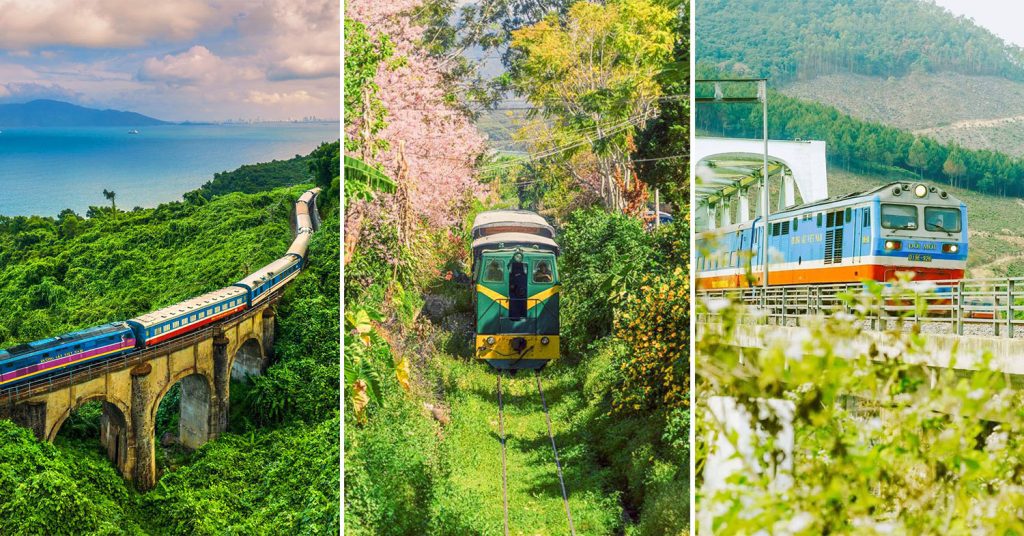
Although there are varied costs for various classes, rail fares are set.
Vietnamese trains offer different classes, and train tickets in Vietnam are separated into 4 different classes that increase in price:
Despite the limited choices, you should pick the highest tier that is still within your means because the rough seats on the lower-class carriages could not be pleasant. There are compartments aboard the train with six and four berths, respectively, for hard- and soft-berth passengers to spend the night.
If you enjoy taking the train, be mindful of busy times of year and reserve berths on night trains as soon as you can. The benefit of taking a night train is that you can travel during the night and avoid paying for lodging.
Travelers could use one of the several shorter train routes available throughout the nation to reach China from Lao Cai.
By Bus
Bus travel is the best option, especially for solo travelers, if your journey to Vietnam will run for several days and you don’t care about comfort. Buses may take you to almost every city in Vietnam, but be aware that some of the country’s dilapidated roads might not be suitable for you. For instance, it will take roughly 8 hours to travel by bus the 276 kilometers from the Mekong Delta to Ho Chi Minh City.
The bus is a fantastic way to go about the major cities in Vietnam. To more effectively plan your journey, you must conduct preliminary study and understand the key language associated with bus travel. When you pull into bus stops, there are frequently no signs, so be cautious to specify your specific destination.
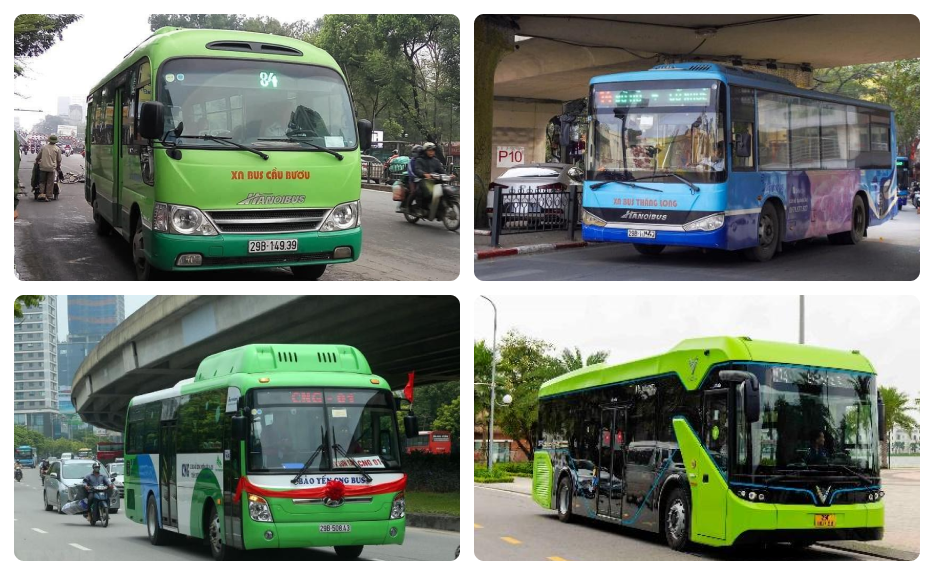
Sleeper buses are one of the most widely used bus kinds for travelers traveling throughout Vietnam. Since they are air-conditioned, run on set schedules, and hold a particular, constrained number of passengers, open tour buses are frequently best suited for long journeys and appear to be preferable to the system of national coaches/buses. National coaches, on the other hand, operate differently.
You should do your homework on private bus companies before purchasing a ticket if you plan to utilize this mode of transportation to travel the country. Additionally, you should take care of your personal things and avoid dozing off while listening to music (or anything else) because there’s a good chance they won’t be there when you wake up the next day. While aboard the bus, keep everything locked up.
By Boat
Although there are many partially navigable rivers in Vietnam, the Mekong and its tributaries remain the most important so far.
Travelers visiting both Vietnam and Cambodia can take boat cruises from Phnom Penh to Chau Doc, which are exhilarating experiences worth trying. Of course, if you like something more opulent, you can also take a private tour company’s river cruise down the Mekong River in luxury.
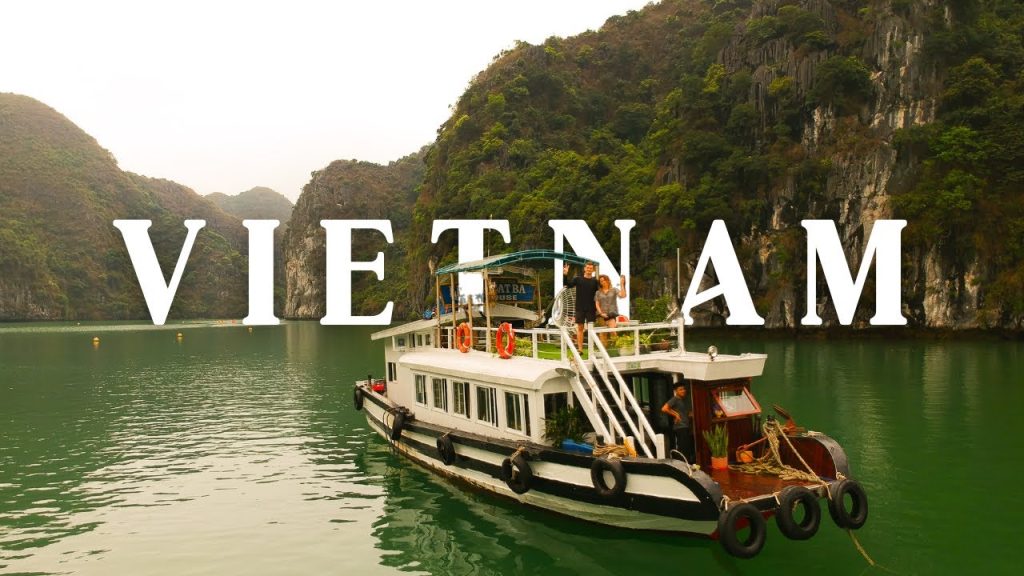
On the sea, this kind of transportation is also feasible. All visitors to northern Vietnam are strongly encouraged to cruise the Halong Bay islands because they will have the opportunity to observe stunning karst island formations. Boat tours to the islands off Nha Trang and the Phu Quoc islands are also suggested in the south.
You should carefully consider your boat choice or pick a reputable travel agency if you want to have the greatest experience possible on a boat excursion in Vietnam. Keep in mind that the majority of boat trips are seasonal and expressly dependent on suitable weather.
By Car
It’s quite thrilling to be able to start your journey on the road because it offers you the freedom to travel to even isolated locations and make stops whenever and wherever you like. Consider driving a car all over Vietnam. It should be reminded that foreign visitors cannot rent a car in Vietnam because international driving permits are not accepted there.

In Vietnam, automobile rental businesses do not provide the option of renting a vehicle for foreigners to drive themselves, although most tour operators or hotels do offer this service.
But be sure the driver can speak with you in English, and don’t forget to ask about the car’s age and make as well as the driver’s experience to avoid any unpleasant surprises.
Be certain of the terms, your destination, and your schedule before beginning your automobile rental.
By Taxis
In Vietnam, taxis are a cost-effective mode of transportation and are available at most significant locations. If hotels or other businesses call a cab for you, it’s likely that it will cost a little bit more than it would have otherwise because the businesses receive a kickback. In light of this, you ought to try to flag one on your own if you’re traveling on a tight budget.
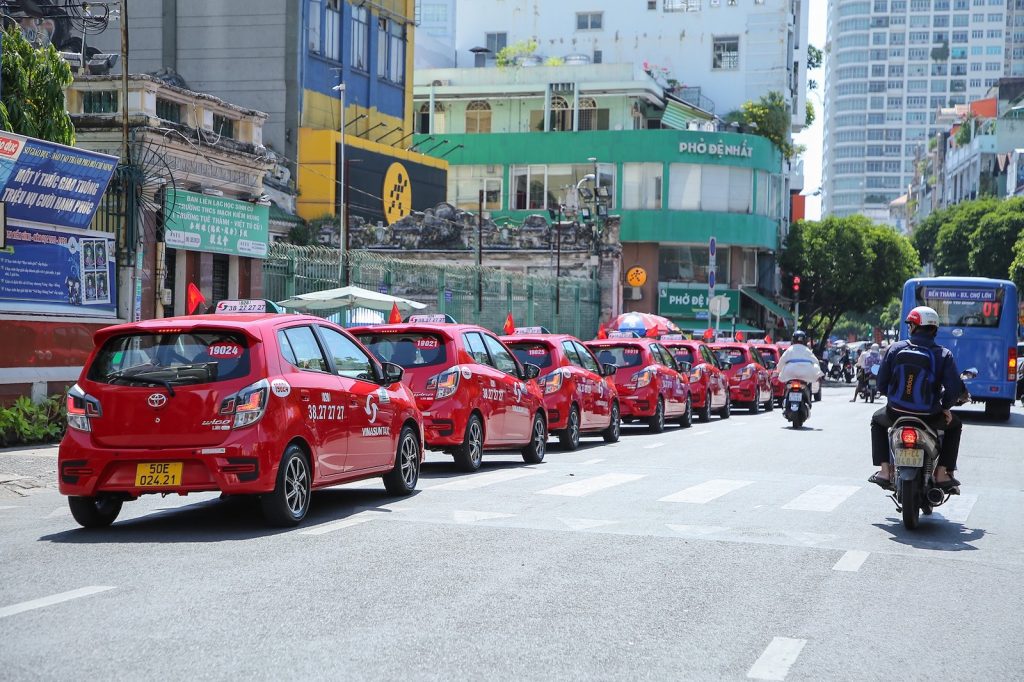
By worldwide standards, taxis with meters are affordable and a nearly risk-free method to get around at night. The typical mileage rates range from 12,000 to 15,000 VND. Only use trusted or highly recommended cab services. There are a few well-known national taxi firms, including Mai Linh, Vinasun, and others.
How Long Does It Take to Travel in Vietnam?
If you’re attempting to figure out how long it will take you to get from point A to point B in Vietnam, check out our distance and time chart today for additional information:
| Route | Distance (km/miles) | Air (hrs) | Bus (hrs) | Rail (hrs) |
| Hanoi Ho Chi Minh City | 1730 | 2:10 | 33-37 | 35 |
| Hanoi Sapa | 355 | N/A | 6 | N/A |
| Hanoi Ha Long | 160 | N/A | 4 | 7 |
| Hanoi Da Nang | 770 | 1:20 | 14-17 | 16-19 |
| Hanoi Nha Trang | 1300 | 1:50 | 30 | 30-35 |
| Hanoi Hue | 669 | 1:10 | 12 | 13 |
| Hanoi Ninh Binh | 94 | N/A | 1: 27 | 1 |
| Hanoi Phu Quoc Island | 2087 | 2:05 | N/A | N/A |
| Hanoi Da Lat | 1418 | 1:50 | 29 | N/A |
| Ho Chi Minh City Da Nang | 958 | 1:20 | 20 | 17 |
| Ho Chi Minh City Nha Trang | 430 | 1:05 | 8 | 9 |
| Ho Chi Minh City Da Lat | 307 | 0:50 | 6 | N/A |
| Ho Chi Minh City Can Tho | 160 | 2:15 | 4 | N/A |
| Ho Chi Minh City Phu Quoc Island | 450 | 1 | N/A | N/A |
| Ho Chi Minh City Ba Ria Vung Tau | 90 | N/A | 1 | N/A |
| Hue Da Nang | 100 | 4 | 2:30 | 2:30 |
| Da Nang Nha Trang | 500 | 1:05 | 11-14 | 10 |
Additional Tips for Getting Around Vietnam
Due to potential taxi troubles, especially if you are tired from a long flight, you may want to organize an airport pick-up through a tour organization or your hotel.
Keep an eye out for road conditions and hazards: Actually, road safety is not one of Vietnam’s strong suits. The intercity road network of two-lane highways is quite risky. Head-on or high-speed collisions are a common sight on Vietnam’s main roadways.
Crossing the street is perhaps the most difficult challenge for most first-time visitors to Vietnam. However, instead of racing across, walk across to give local motorcyclists time to maneuver around you.
Getting around in Vietnam’s countryside is easier than in the city.
To summarize, railways are considered the greatest way to travel around Vietnam economically and comfortably; open tour buses are suitable for regions not served by trains; and flights are ideal for individuals with limited time. That is the finest way to travel in Vietnam.




